The Intel Core i7 has always been synonymous with high-end processors in the consumer market, and it has been favored by many gaming enthusiasts and tech aficionados since its inception.
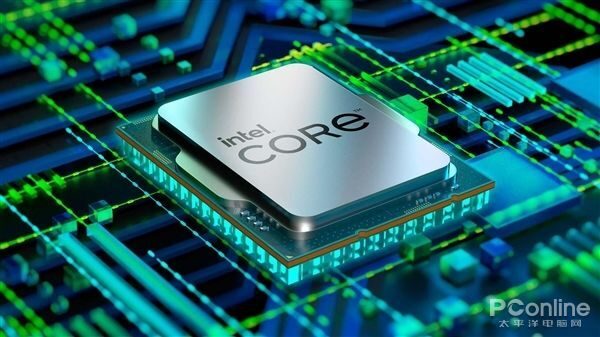
The latest 12th generation i7 processors boast impressive specifications, featuring 12 cores and 20 threads, with a design comprising 8 performance cores and 4 efficiency cores. It comes with a massive 25MB L3 cache and can reach a maximum turbo frequency of 5.0GHz, making us eager to see its real-world performance.
This review will focus on the Intel Core i7-12700KF, which is the most suitable product in the i7 series for gamers. We will also provide some performance references for the 12700K (after all, the only difference between them is the presence of integrated graphics), making it a two-for-one deal!
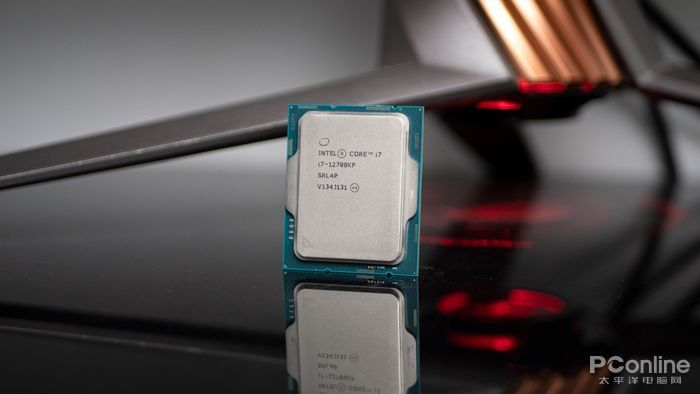
Intel Core i7-12700KF has a model name that gives you a rough idea of its specifications. The “F” indicates no integrated graphics, and indeed, compared to its siblings, the i7-12700K and i7-12700, it lacks the UHD770 integrated graphics; the “K” signifies that it is unlocked for overclocking. Compared to the 12700 and 12700F, it has a higher base frequency (3.6GHz, while the latter two only have 2.1GHz) and a slightly higher maximum turbo frequency (5.0GHz, compared to 4.9GHz for the latter two). It is also unlocked, allowing for good overclocking potential with high-end motherboards like the Z690, enhancing its playability! Furthermore, it natively supports both DDR5-4800MHz and DDR4-3200MHz high-frequency memory, with a maximum compatibility of 128GB and ECC support.
By removing the integrated graphics, its boxed price is approximately 300 yuan less than the 12700K (based on JD.com prices as of June 28), which makes its price-performance ratio quite outstanding! After all, most users who can afford this budget will pair it with a decent graphics card, making the lack of integrated graphics irrelevant.
After outlining the product positioning and specifications, let’s dive straight into the performance testing!
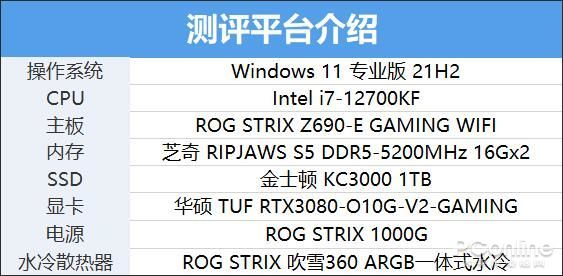
Before testing, let’s briefly understand our testing platform. For the motherboard, I chose the ROG STRIX Z690-E GAMING WIFI to pair with the i7-12700KF, aiming to unleash its best performance. The memory consists of two G.Skill DDR5-5200MHz 16GB high-frequency sticks, and the graphics card is an ASUS TUF 3080.
First, let’s look at the theoretical performance of the CPU;
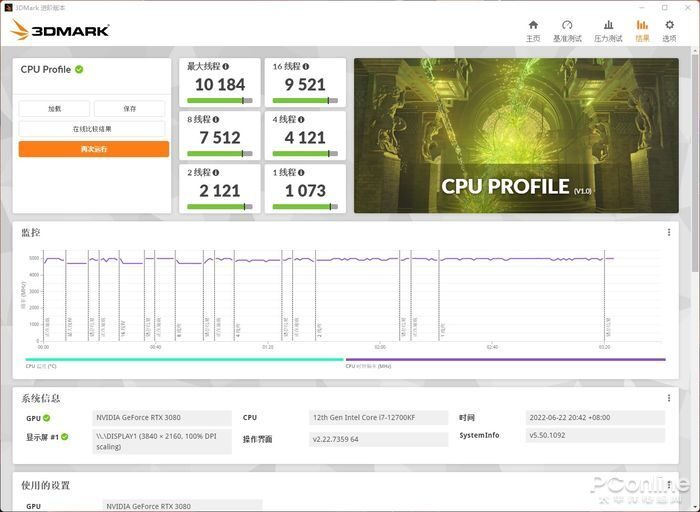
First, the score for the 3DMark CPU Profile project: single-threaded score of 1073, dual-threaded score of 2121, quad-threaded score of 4121, octa-threaded score of 7512, 16-threaded score of 9521, and maximum thread score of 10184. If you recall our previous review of the i7-11700K, you’ll notice a significant improvement in this generation of i7 compared to the last!
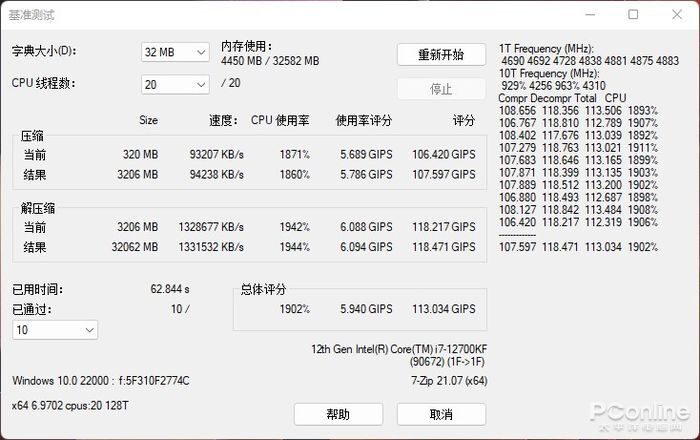
In terms of 7-Zip decompression, the i7-12700KF also performed impressively, achieving a compression score of 107.597 GOPS and a decompression score of 118.471 GIPS.
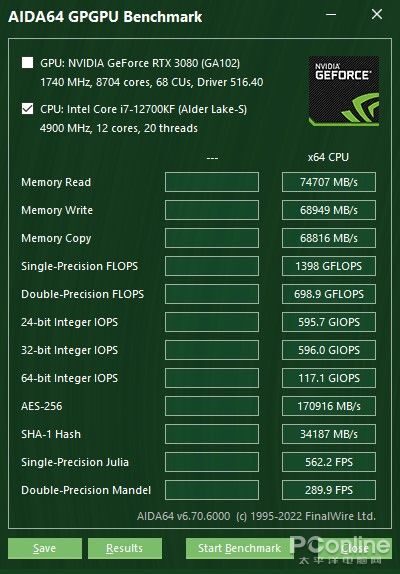
In AIDA64, thanks to the ultra-high bandwidth of DDR5 memory, the memory read performance reached an astonishing 74707MB/s, with write and copy speeds also approaching 70GB/s, which was unimaginable just a few years ago. Additionally, the i7’s single and double precision floating-point performance is also excellent, as expected from an i7, meeting more professional demands at this product level.
Now, let’s look at comprehensive performance testing that is more relevant to everyday use; first is PCMark10, a professional testing software that, like 3DMark, covers four scenarios: basic functionality, productivity, digital content creation, and gaming. The software provides scores for each category as well as an overall score, closely reflecting actual usage scenarios.
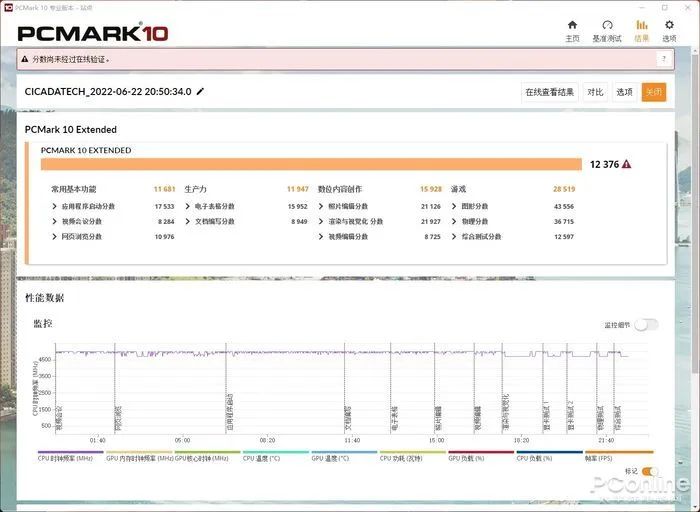
Basic functionality score of 11681, productivity score of 11947, digital content creation score of 15928, gaming score of 28519, total score of 12376; any one of these scores is impressive.
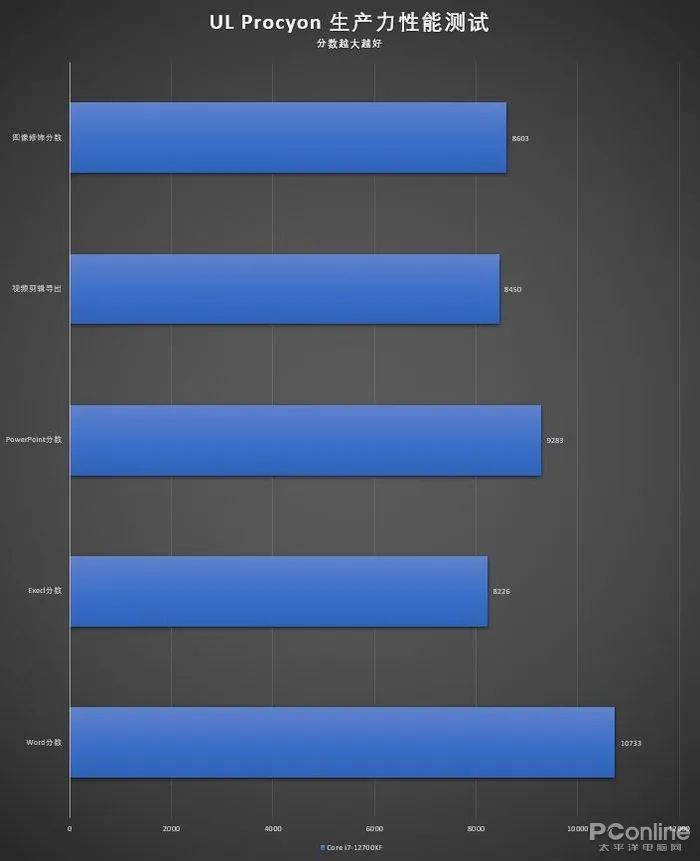
In the UL Procyon productivity performance, the Office productivity scores were 10733 (Word), 8226 (Excel), and 9283 (PPT); the video editing export score in Pr was 8450, and the image editing score was 8603, showing a significant improvement over the previous generation i7 that we tested.
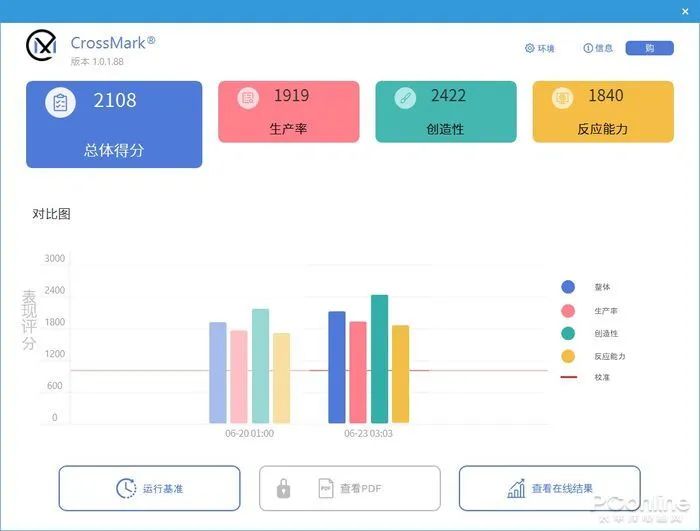
In CrossMark, the i7-12700KF achieved scores of 1919 for productivity, 2422 for creativity, 1840 for responsiveness, and an overall score of 2108! A solid first-tier level!
Additionally, to gain a deeper understanding of the i7-12700KF’s performance in video post-production, we conducted benchmark tests using PugetBench for DaVinci, Pr, and Ps to simulate actual usage scenarios, with the following results.
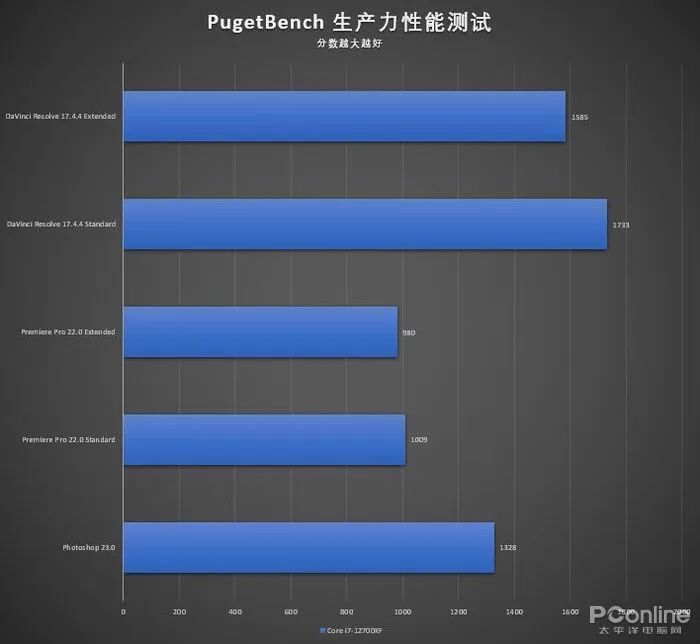
In DaVinci, under standard testing, the score reached 1733, with an extended test score of 1585; for Pr, the standard test score was 1009, and the extended test score was 980, while the standard test score for Ps reached 1328.
This level of performance can fully handle high-intensity video post-production work.
For actual gaming experience, we tested five popular AAA games: God of War 4, Elden Ring, Cyberpunk 2077, Tomb Raider: Shadow, and Forza Horizon 5, obtaining the following results:

In God of War 4, running a fixed test scene with all effects at maximum quality settings and 4K resolution, we achieved an average frame rate of 104 fps, with rich visual details and silky smooth performance, completely free of stutter.

Elden Ring similarly maintained a stable average frame rate of 60 fps at 4K with all effects enabled, with a minimum of 59.7 fps and a maximum of 60.1 fps. If it weren’t for the game’s own frame rate cap at 60 fps, we would likely see even better frame rate performance; however, even so, 60 fps meets the standard for smooth operation.

Next, let’s look at Cyberpunk 2077, which now features a benchmark in its latest version of Night City, making testing much easier with fixed variables, yielding more reliable data. Under the “Ray Tracing: Ultra” preset at 4K resolution, the average frame rate reached 50.77 fps, with a minimum of 38.36 fps and a maximum of 63.87 fps, also achieving smooth operation!

Tomb Raider: Shadow, as the latest installment in the long-standing AAA game series, has received widespread acclaim since its release, and its built-in benchmark is a favorite among major media for evaluating hardware gaming performance. At 4K resolution, with the highest quality preset and DLSS balanced mode, the combination of the i7-12700KF and RTX3080 can effortlessly maintain an average frame rate of 128 fps, allowing you to experience the thrill of AAA games exceeding 100 fps.

Forza Horizon 5 is equally impressive; as a popular racing AAA title in recent years, it demands high hardware requirements. Running at maximum extreme quality settings at 4K resolution, the i7-12700KF paired with the RTX3080 achieves a level of 77 fps, running perfectly smoothly.
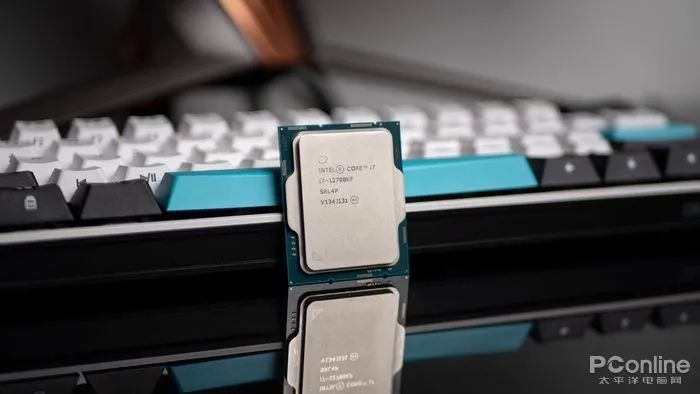
Through the various tests above, it’s evident that the i7-12700KF is an outstanding product with excellent performance across the board, truly deserving of its title as Intel’s high-end processor in the 12th generation Core lineup! If you’re still torn between the 12700KF and the 12700K, I have a few suggestions for you to consider.
For users planning to purchase a mid to high-end discrete graphics card like the RTX3080 or 3070Ti right now, I would recommend choosing the 12700KF. The only difference between it and the 12700K is the presence of integrated graphics; after all, with a discrete graphics card, the integrated graphics are unnecessary, so opting for the 12700KF without integrated graphics saves you about 200 yuan, which is quite a deal!
If you’re just looking to make a temporary transition and want to wait for more powerful NVIDIA RTX40 series cards later this year, then the 12700K would be a good choice, as it features the UHD770 integrated graphics, which can handle daily office tasks, entertainment, and even light gaming without any pressure.
So, what do you think? After reading this article, do you know how to choose between the 12700K and 12700KF?








































